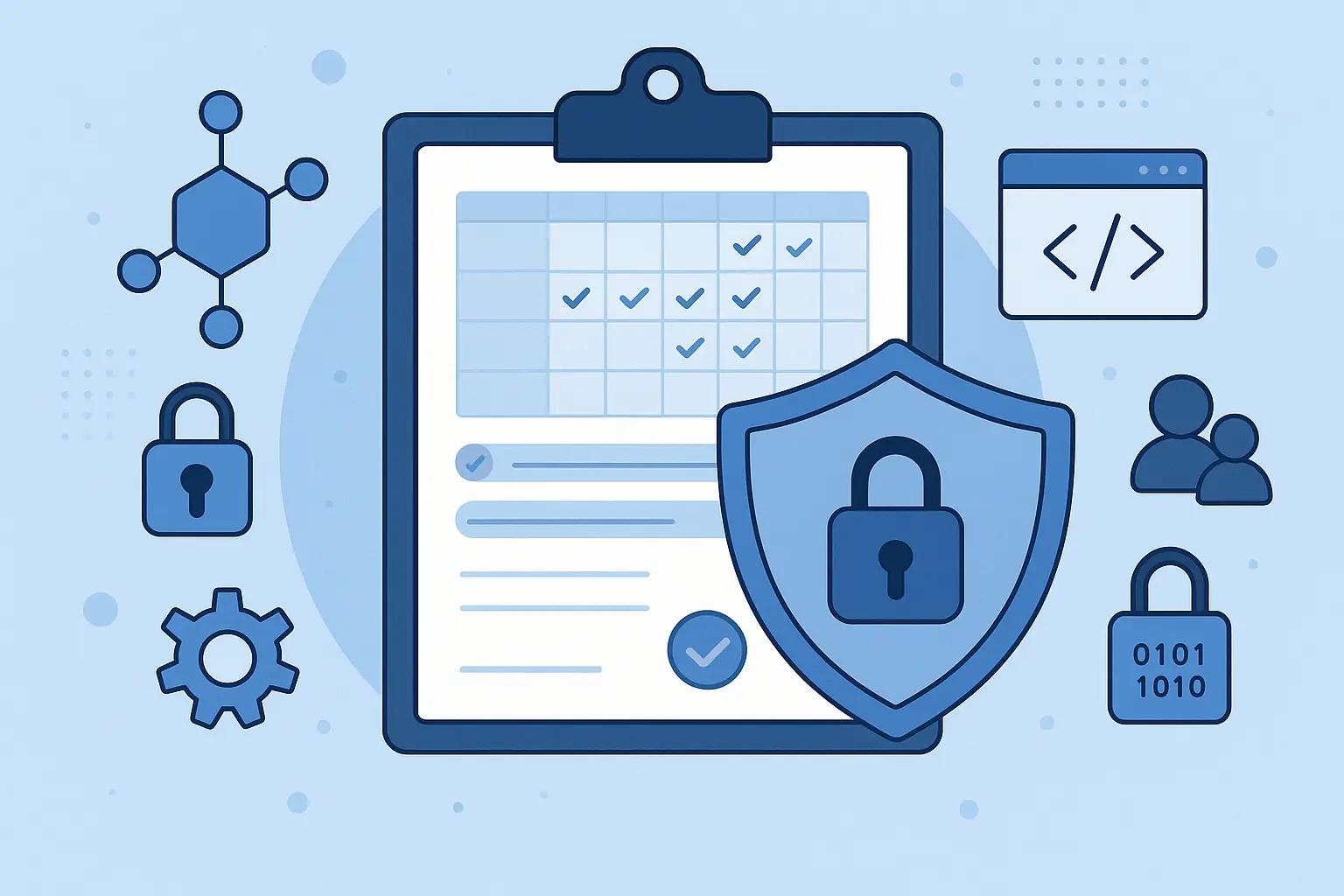Efficient time management is crucial for success in any fast-paced business environment. Scheduling software has become an indispensable tool for streamlining operations and improving customer satisfaction. This article will guide you through the process of selecting, implementing, and financing the right scheduling solution for your unique needs.
Understanding the Impact of Scheduling Software
Scheduling software revolutionizes business operations by significantly reducing no-shows and last-minute cancellations. Automated reminders and easy rescheduling options ensure clients are more likely to keep their appointments or provide adequate notice for changes.
This technology also improves resource allocation by providing a real-time overview of staff availability and workload. This optimization increases productivity and helps prevent employee burnout by ensuring a more balanced workload distribution.
Customer experience sees substantial improvement with online booking capabilities. By catering to modern consumers’ preferences for convenience and self-service options, businesses can increase bookings and improve overall satisfaction.
Staff productivity also benefits from automated routine tasks, allowing team members to focus on more valuable activities requiring human interaction and expertise. This shift often leads to increased job satisfaction among employees.
Lastly, the data analytics capabilities of scheduling software offer valuable insights into business operations. These features help understand booking patterns, identify peak hours, and track staff performance, enabling informed decision-making for business optimization.
Key Features to Consider
User-Friendly Interface
The software should be interactive and easy for staff and customers to use. A clean, easy-to-navigate interface ensures quick adoption and reduces the learning curve.
Integration Capabilities
Look for software that integrates seamlessly with your existing tools, such as:
- Customer Relationship Management (CRM) systems
- Payment processors
- Email marketing platforms
- Accounting software
Customization Options
Every business has unique scheduling needs. The ideal software should offer customization options to align with your brand and specific requirements.
Mobile Compatibility
In our mobile-first world, ensure the software works well on smartphones and tablets. This allows customers to book on-the-go and staff to manage appointments from anywhere.
Automated Reminders
Reduce no-shows with automated reminders. Look for software that offers customizable email, SMS, or push notifications reminders.
Reporting and Analytics
Advanced reporting features can provide insights into booking patterns, peak hours, and staff performance, helping you make data-driven decisions.
Assessing Your Business Needs
Before selecting scheduling software, evaluate your specific requirements:
Type of Services Offered
Different industries have varying scheduling needs. A hair salon’s requirements differ from those of a consulting firm or a medical practice.
Number of Staff and Locations
Consider whether you need software that can handle multiple staff members and locations. Some solutions offer features like resource allocation and staff management.
Booking Volume
Evaluate your current and projected booking volume. Ensure the software can handle your expected growth without performance issues.
Budget Constraints
While it’s important to invest in quality software, consider your budget. Many providers offer tiered pricing based on features and user numbers.
Popular Scheduling Software Options
Bookafy
Ideal for: SMB to Enterprise.
Key features: Automated scheduling, two-way calendar sync, seamless API integration.
Calendly
Ideal for: Small businesses and individuals
Key features: Clean interface, easy integration with calendar apps
Acuity Scheduling
Ideal for: Service-based businesses.
Key features: Customizable intake forms and payment integration.
SimplyBook.me
Ideal for: Multi-location businesses.
Key features: Multi-site support, client management.
Appointy
Ideal for: Retail and service industries.
Key features: POS integration and inventory management.
Setmore
Ideal for: Small to medium-sized businesses.
Key features: Free tier availability and video conferencing integration.
Implementation Strategies
Staff Training
Invest time in training your staff to use the new system effectively. Many providers offer training resources or sessions.
Data Migration
If you’re switching from another system, ensure the new software supports easy data migration to avoid losing valuable customer information.
Customer Communication
Inform your customers about the new booking system. Highlight the benefits and provide clear instructions on how to use it.
Phased Roll-out
Consider implementing the software in phases, starting with a single department or location before company-wide adoption.
Maximizing ROI on Scheduling Software
To maximize the return on your scheduling software investment, adopt a proactive approach to its use and management. Regularly review and optimize your scheduling settings, ensuring they align with your evolving business needs and customer preferences. Implement a system to collect and act on customer feedback, focusing on the booking experience and service.
Stay informed about new features and updates from your software provider, exploring how they can enhance your workflow. Analyze booking data regularly to identify trends in customer behavior, peak hours, and service popularity. Use these insights to make informed decisions about resource allocation, staffing levels, and service offerings.
Implement ongoing training for your staff to ensure they use the software to its full potential. This could include refresher sessions on existing features and training on new updates. Lastly, integrate with other business tools to create a more seamless workflow and comprehensive view of your operations.
By following these strategies, you can transform your scheduling software from a simple booking tool into a powerful business efficiency and growth driver.
Financing Your Scheduling Software Investment
While scheduling software can significantly improve efficiency, the upfront cost can be a concern for some businesses. Here are some financing options to consider:
Traditional Business Loans
Banks and credit unions offer business loans that can be used for software investments. These typically require good credit and may have a lengthy approval process.
SBA Loans
Small Business Administration (SBA) loans often have favorable terms and can be used for technology investments.
Business Credit Cards
For smaller investments, a business credit card might be suitable. Look for cards with 0% introductory APR offers.
Online Lenders
Online lenders like CreditNinja offer quick cash options for businesses during times of emergency and short-term investments. Ensure you carefully consider the terms and interest rates to ensure they meet your needs.
Software Provider Financing
Some software providers offer financing options or payment plans that can be more tailored to the specific product.
Considerations When Exploring Financing Options
When considering financing options, keep in mind:
- Interest rates and fees
- Repayment terms
- Impact on credit score
- Long-term financial implications
Make sure you always carefully evaluate any financing option against your business’s cash flow and long-term financial health.
The Future of Scheduling Software
As technology advances, scheduling software is evolving significantly, with AI-powered assistants leading the charge. These intelligent systems will go beyond basic automation, learning from booking patterns and user preferences to handle complex scenarios. They could optimize scheduling by considering availability, travel time, and personal preferences.
Integration with virtual meeting platforms is another key trend, especially with the rise of remote work. Future software will likely offer seamless connections with video conferencing tools, automatically generating meeting links and managing hybrid meetings with in-person and remote participants.
Predictive analytics will play a crucial role by analyzing data to forecast busy periods, predict cancellations, and suggest optimal scheduling times. This will help businesses maximize resource utilization and minimize downtime, boosting efficiency and profitability.
Blockchain technology is also entering the scene, offering tamper-proof record-keeping for appointments. This is particularly valuable in healthcare and legal services, where accurate records are essential.
As these technologies converge, scheduling software will become more intelligent, intuitive, and integrated, simplifying the booking process and enhancing time management for businesses and individuals.
Making the Final Decision
When you’ve narrowed down your options, consider these final steps:
- Request detailed demos from your top choices – Schedule personalized demos to see the software in action and ask specific questions about your business needs. This allows you to evaluate how well each option aligns with your requirements.
- Involve key staff members in the decision-making process – Include team members who will use the software daily. Their input on usability and features is crucial for successful implementation and adoption.
- Take advantage of free trials to test the software in your real-world environment – Use free trial periods to set up and test the software in your actual business setting. This hands-on experience provides valuable insights into performance and user experience.
- Read the fine print regarding contracts, cancellation policies, and data ownership – Carefully review all terms and conditions, including contract length, cancellation policies, and data ownership. Understanding these details helps avoid future complications and ensures the agreement aligns with your business needs.
Conclusion
Choosing and implementing the right scheduling software is a critical decision that can significantly impact your business’s efficiency and customer satisfaction. By carefully assessing your needs, comparing options, and considering future scalability, you can select a solution that meets your current requirements and supports your business growth.








